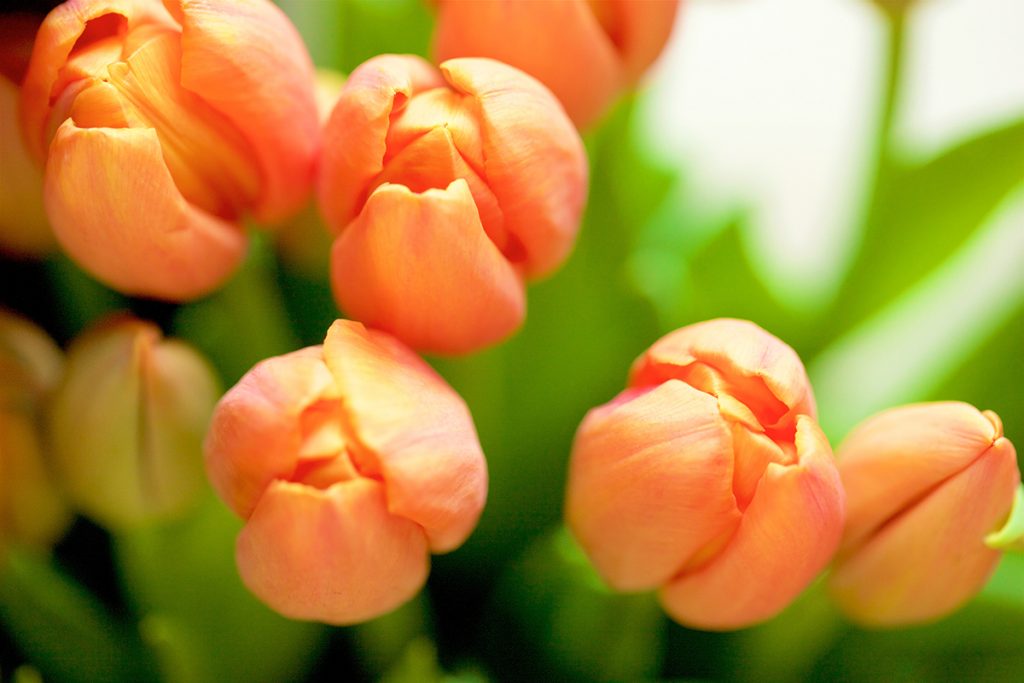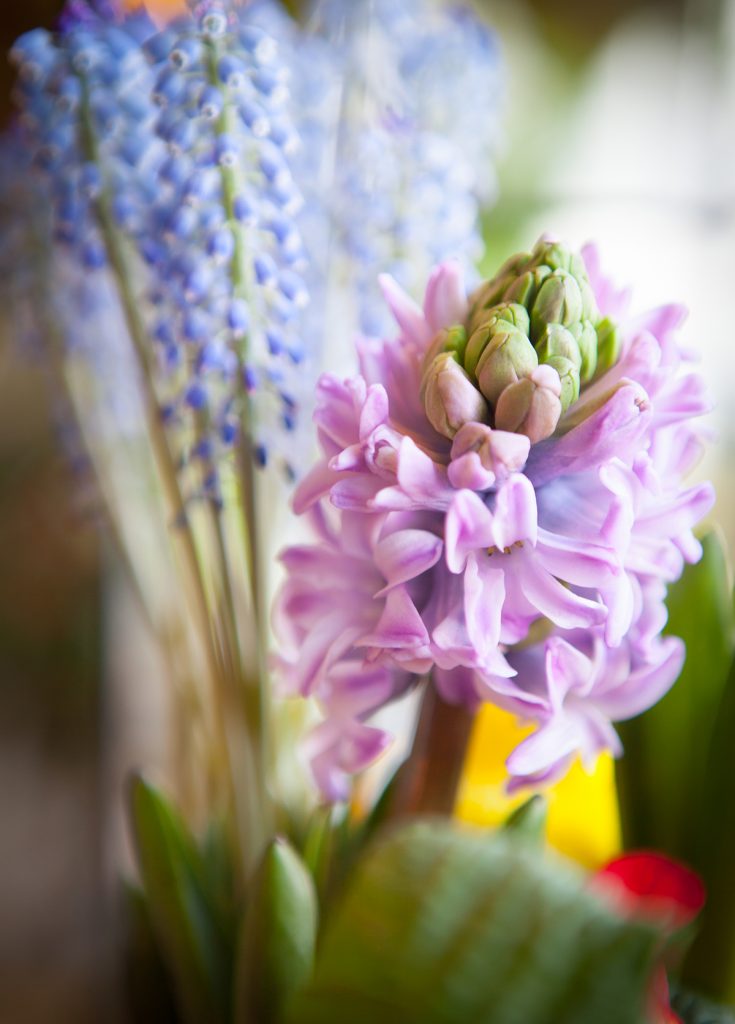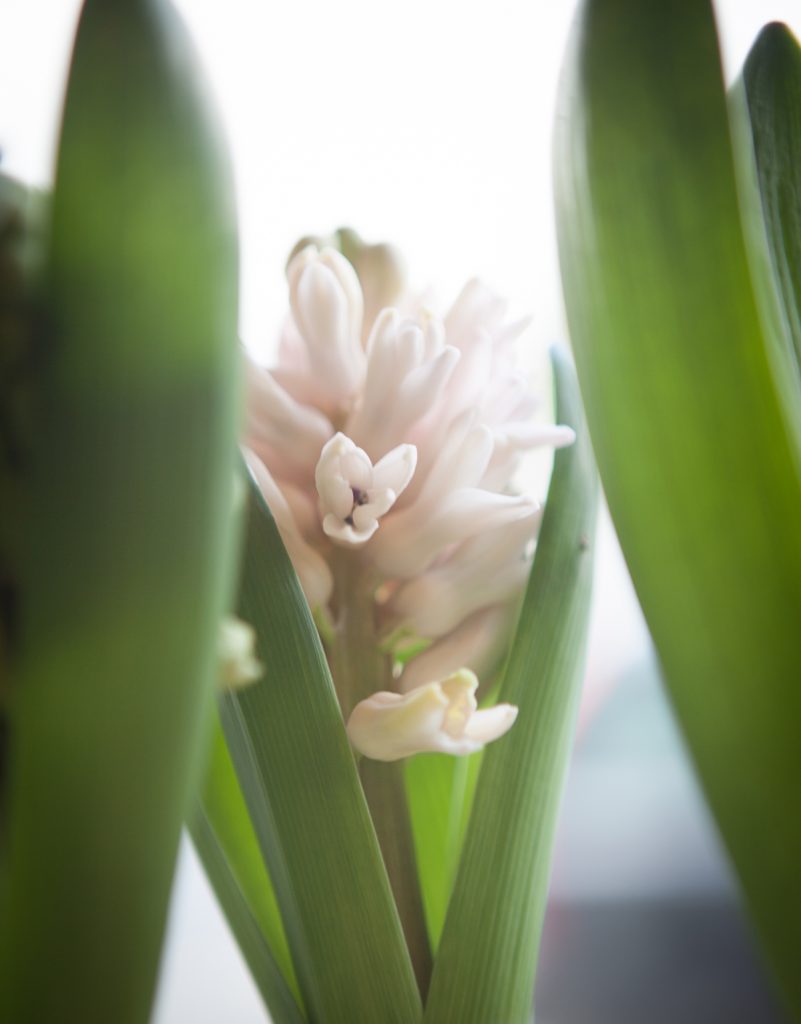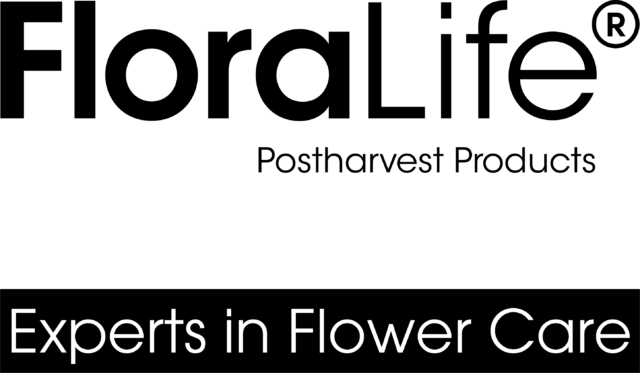Spring Bulbs to the Rescue!
It seems like just when you’re ready to surrender to the winter blahs, her come those first crocuses breaking through the frost to brighten your day and provide a fresh perspective. Bulbs truly bring joy amid the gloom, so why not give them a little TLC in return? That’s the topic of our latest article for Florists’ Review: “Spring Sensation: Care and Handling of Cut Bulb Flowers.”

First, let’s define “Bulb.” The range of blooms we commonly call bulbs include flowers that aren’t necessarily “true” bulbs. A true bulb would be a tulip, lily or hyacinth. Other flowers are technically born as corms (Crocus), rhizomes (Iris), or tuberous roots (Dahlia). Is this important info? Only in that it helps illustrate the differences, big and small, between bulb flowers and their care. Let’s look at a few of these differences!

Bulb Diversity: In terms of size, color, and vase life, there seems to be a bulb for every taste.
- Color: tulips and lilies offer a variety of hues to liven up any arrangement.
- Size: From small (such as crocus) to large (like Amaryllis)
- Vase life: depending on your need, you can choose from the brief flourish of the daylily all the way to the long-lived Alstroemeria, Freesia and Gladiolus.
Among these differences are varying levels of ethylene sensitivity. If you’re not sure about your bulb’s sensitivity to ethylene and other hormones, ask your supplier.
Year-round Bulb Availability: Modern research and techniques such as bulb freezing, cooling programming, hydroponic culture, and controlled greenhouse growing have blessed us with bulb availability like we have never seen before!
Bulb Care and Handling: Bulbs require TLC, just like any other cut flower. Proper bulb care and handling includes:
- Temperature management
- Sanitation
- Hydration
- Flower food, and
- Protection from ethylene damage
These will help to increase the longevity, quality, and appearance of your bulbs.
Note on flower food: It’s a must for bulbs! Why? Hint: it involves proper growth, opening, and color development. Read the article to find out! (Page 22!)
And a further discussion of ethylene… It’s an all-around bad actor, but its negative effects will differ from bulb to bulb. Get to know your bulbs, the various ill effects of ethylene, and how to avoid them!

Other Unique Bulb Issues
Post-harvest hormonal imbalances among bulbs are also a consideration. Leaf yellowing and stems that continue to grow after cutting are a couple of examples. Again, know your bulbs (and read the article!)
So, rejoice at the coming of spring and the bulbs that it brings. Get to know your bulbs and their care & handling needs, and turn to FloraLife for further bulb info and answers!
